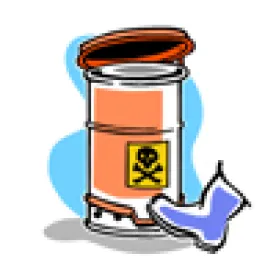OSHA recently entered into a corporate-wide settlement agreement with TOMRA NY Recycling LLC regarding citations issued under OSHA’s BBP Standard. In that settlement, TOMRA agreed to revise its BBP exposure control plan and exposure determination at each of its NY facilities “to reflect that all employees, including temporary and leased employees, who manually sort recyclable bottles and cans, have occupational exposure to BBP.” Consistent with that determination, TOMRA also agreed to provide its sorters with puncture-resistant gloves, tongs or other engineering controls, the annual training required by the OSHA BBP standard and the Hepatitis B vaccination series (of 3 vaccinations).
The outcome in this case suggests OSHA may have modified its position on this issue. In 1993, OSHA issued a letter of interpretation to a recycling facilities operator inquiring as to whether the "infrequent and intermittent presence of [hypodermic] needles at an automated material recovery facility constitutes reasonably anticipated occupational exposure." The operator established a procedure in which the sorting conveyor was stopped and a supervisor was summoned whenever a hypodermic needle was discovered. OSHA indicated that the summoned supervisor would be covered by the BBP Standard, but the sorters would not so long as the procedure was adequate to prevent needlesticks to sorters.
In 2003, OSHA issued a letter of interpretation to an operator of municipal solid waste services that had established a procedure requiring supervisors to respond to situations where contaminated sharps were found. OSHA advised that the failure to include the employees responsible for responding to the sighting of, and appropriately discarding, contaminated sharps in the site’s BBP Program, and offer them pre-exposure hepatitis vaccinations may result in the issuance of a serious citation. OSHA also advised that determining reasonably anticipated exposure to BBP should be done on a facility-by-facility, job-task-by-job-task basis, not generically across the industry. In a follow-up letter, OSHA took the position that, “if a sharp (e.g., syringe, lancet) is found in the waste stream, one must assume that it has been used to inject a medication or drug into a person and, by virtue of that action, is reasonably anticipated to have blood on it; therefore, it is a contaminated sharp.”
A DOL/OSHA source indicated that the TOMRA enforcement action was based on the presence of hypodermic needles and the occurrence of needlesticks. It remains to be seen whether this enforcement action was based on some unique facts or reflects a change in OSHA’s position on the application of its BBP Standard to solid waste and recycling operations.




 />i
/>i

